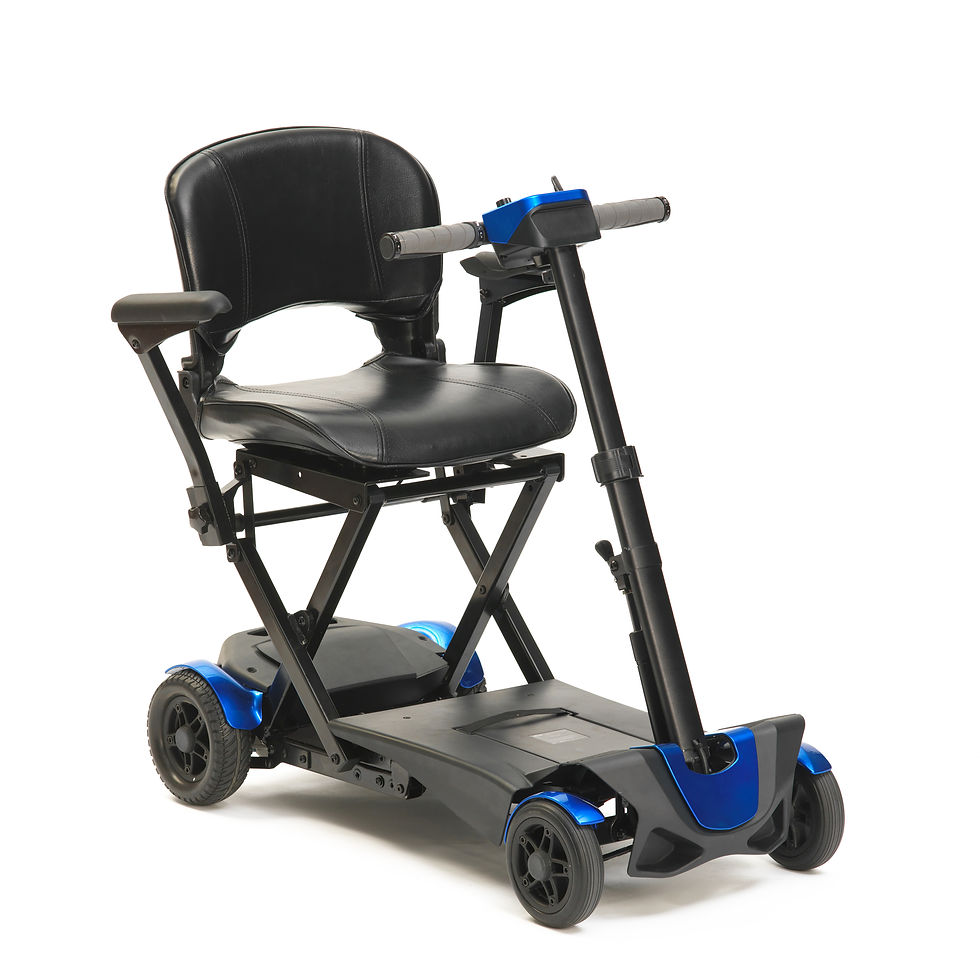How to Travel with a Mobility Aid: Tips for Cars, Trains, and Planes
- Ollie Churchill
- Oct 7
- 3 min read
Travel can be stressful enough without having to worry about your mobility aid. Whether you’re heading on holiday, visiting family, or just taking a day trip, planning ahead makes all the difference. From foldable scooters to compact rollators, there are plenty of ways to make travel smoother. Here’s our expert guide to travelling with a mobility aid, by car, train, and plane.


Travelling by Car
Cars are often the easiest way to transport mobility aids, but you’ll want to make sure you have the right setup:
1. Check boot space before you go
Many mobility aids can fold or dismantle, but make sure your car has enough space for safe storage. Measure the boot and compare it with your aid’s folded dimensions.
2. Use ramps for heavier aids
If you’re transporting a scooter or powerchair, a portable ramp can save your back and make loading easier.
3. Secure your aid properly
Avoid letting your scooter or rollator slide around in the boot. Use straps or non-slip mats to keep it steady.
4. Consider a car hoist
Frequent travellers may benefit from a fitted car hoist, making it simple to lift heavier equipment in and out.
Travelling by Train
Trains are a popular choice, especially for city travel. To make your journey hassle-free:
1. Book passenger assistance in advance
UK train services allow you to pre-book help with boarding, seating, and luggage. Aim to book at least 24 hours before you travel.
2. Know the train’s accessibility rules
Some trains limit scooter size and weight. Compact or auto-fold scooters are usually the safest choice.
3. Stay near accessible carriages
Most stations have designated boarding points for wheelchair users and mobility aids, look out for the signage.
4. Allow extra time
Stations can be busy, and lifts are not always working. Arriving early reduces stress and gives you flexibility.
Travelling by Plane
Air travel can feel daunting, but careful planning keeps things manageable:
1. Notify the airline when booking
Let the airline know about your mobility aid. They’ll advise on restrictions and make sure staff are ready to assist.
2. Battery rules for scooters and powerchairs
Airlines follow strict rules on lithium batteries. Many auto-fold scooters are airline-friendly, but always check specifications before booking.
3. Keep essentials with you
If your aid is stored in the hold, carry a walking stick or foldable rollator so you’re not left stranded in the terminal.
4. Protect your equipment
Ask for a fragile tag and remove detachable parts (like baskets or cushions) before checking in.
5. Plan your airport time
Book special assistance at least 48 hours before your flight. This covers wheelchair transport through the airport, priority boarding, and baggage help.
Choosing the Right Aid for Travel
Not all mobility aids are travel-friendly. The most popular options for travellers include:
Auto-fold scooters: Compact, lightweight, and airline-approved models are perfect for holidays.
Lightweight rollators: Easy to fold and stow, ideal for city breaks or train trips.
Folding walking sticks: A handy backup that takes almost no space in your luggage.
At Elevate Mobility, we stock a wide range of travel-ready mobility aids, designed to keep you moving wherever life takes you.
Travelling with a mobility aid doesn’t need to be complicated. With the right planning and equipment, you can enjoy stress-free journeys by car, train, or plane.





Comments